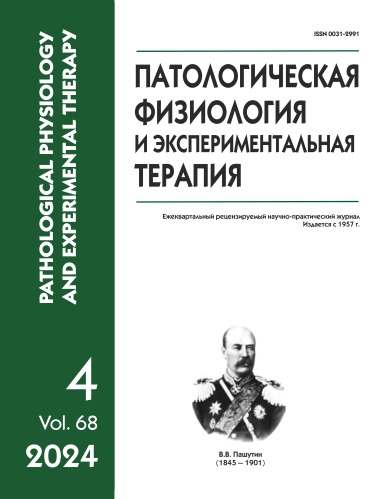Stimulation of innate immune mechanisms in human donor corneas
DOI:
https://doi.org/10.25557/0031-2991.2024.04.45-51Keywords:
cornea, immunity, decontamination, virus, interferonAbstract
Introduction. This study evaluated the ability of corneal tissue to activate the innate immune system for viral decontamination of a corneal graft. It is well known that viral invasion activates the innate immune system. However, there is a shortage of publications on the ability of corneal tissue to produce its own interferons. Thus, the aim of this study was to evaluate the ability of cadaveric human donor corneal tissue to produce its own type 1 interferons (IFN-α and IFN-β) in an in vitro experiment on cell cultures of corneal keratocytes and corneal fibroblasts. Мethods. To achieve this aim, we used cadaveric human donor corneas and isolated and cultured corneal keratocytes and corneal fibroblasts. An interferon inducer was added to the culture medium of the experimental group to activate the innate immune system. Cells cultured in a complete culture medium served as a control. At the end of the experiment, an immunohistochemical study was performed to determine the phenotypic transformation and an enzyme immunoassay to detect endogenous IFN-α and IFN-β. Results. The culture medium with 1 mg/100 ml of the interferon inducer added to the cultured keratocytes and fibroblasts induced the production of type 1 interferons (IFN-α and IFN-β), with a significantly greater amount of interferon released in the fibroblast cell culture compared to the keratocyte cell culture (p<0.05). Сonclusions. The interferon inducer added to the growth medium for 24 hours activated the innate immunity mechanism in corneal cells and tissue, significantly more in the fibroblast cell culture, without causing any change in the cell phenotype.Downloads
Published
2024-12-28
Issue
Section
Original research
How to Cite
[1]
2024. Stimulation of innate immune mechanisms in human donor corneas . Patologicheskaya Fiziologiya i Eksperimental’naya Terapiya (Pathological physiology and experimental therapy). 68, 4 (Dec. 2024), 45–51. DOI:https://doi.org/10.25557/0031-2991.2024.04.45-51.






